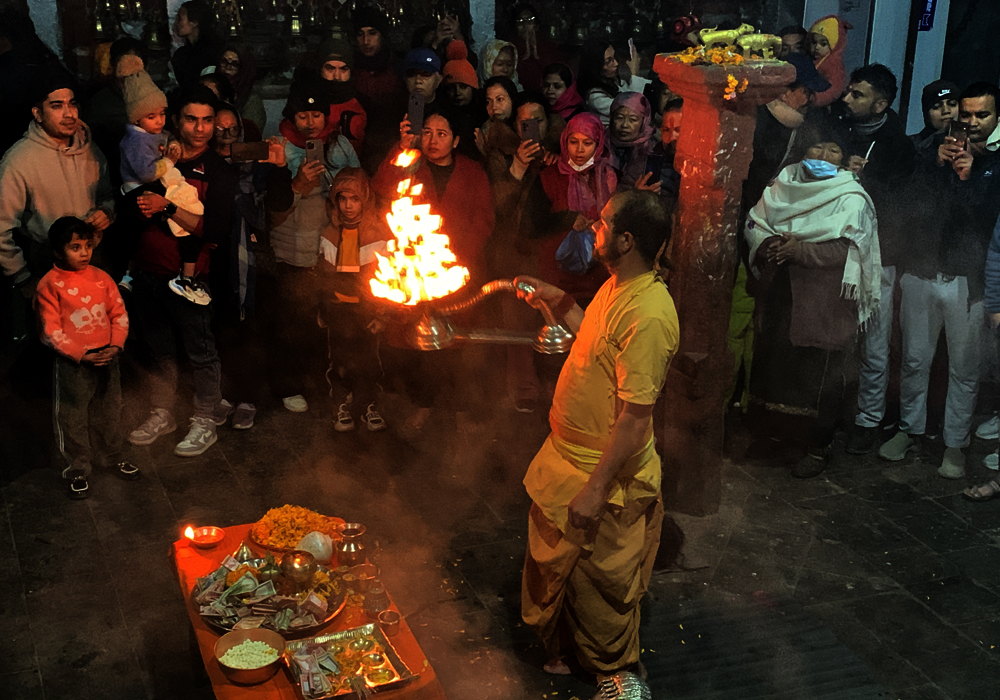Maratika Cave at Halesi is a tri-junction of pilgrimage seekers: Hindu, Buddhist, and Kirant people. In the remote countryside of eastern Nepal, a beautiful spiritual hill holds a huge significance to devotees around the globe. It is a sacred meditation site of Mahasiddhi Guru Rinpoche for Buddhists, a holy destination of Lord Shankar Mahadev for Buddhist devotees, and Kirant (Rai) regards Halesi Cave as an abode of their ancestral Hetchhakuppa, according to their rich oral traditions,
Story/Myths/Traditions in Vajrayana Buddhism
The Maratika cave is such a significant cave, where Mahasiddhi Guru Rinpoche (Padmasambhava) meditated with his consort, Lhacham Mandarava, after coming from India. It is such a sacred cave, where both received the blessings of immortality from Buddha Amitayus.
The Cave of Halesi is widely renowned for Guru Padmasambhava’s enlightenment and the blessings of immortality of Buddha Amitayu. The longevity of life, Dharma practices and major marks of the divine journey have blessed Maratika cave as a prime point of Dharmic Yatra (pilgrimage) for Vajrayana Buddhism practitioners.
Highlights at the Premises of Maratika Cave-Halesi
Three hills, named after Avalokiteshvara (at the center), Vajrapani (western side), and Manjushri (eastern side)
Five Gates in the Cave: Getting rid of negative Karmas
Swarga Dwar (Gate of Heaven)
Dharma Dwar (Gate of Righteousness)
Paap Dwar (Gate of Sin)
Janma Dwar (Gate of Birth)
Karma Dwar (Gate of Deeds)
The Lower Cave of The Eight Herukas (Basaha Cave) has a wide-opened roof and it is believed that Guru Rinpoche flew out from that sky door and meditated in the surrounding places. While leaving, he left his footprints which are visible even now. If you relate it to Hindu mythology, Lord Shanker flew away from there to get rid of a monster, named Bhasmasur. Various self-arised deities ‘images can be seen inside the cave.
Story/Myths/Traditions in Hinduism
Once the evil spirit Bhasmeshor sat in a deep penance, Mahadev became so impressed and asked him what he wanted a blessing. (Baradan)Then he asked: whoever’s head he touched should be destroyed. Mahadev fulfilled his wish. But Bhasmasur wanted to test it on Mahadev Himself.

Mahadev ran from there but Bhasmasur did not leave him. Then he made a cave at Halesi and entered in the ground, asking Basaha (bull) to guard him. When Bhasmasur came, Basaha wasted Bhasmasur’s time with a fight. Till that time, Mahadev crossed the cave, brusted the cliff, and flew away from there, and disappeared in Patal’s Cave nearby.
After Mahadev went into Patal Cave, Lord Visnu disguised himself and turned out to be a beautiful woman (Mohani rup). Bhasmasur was enticed with the woman and he copied the dance of the woman. During the dance, he took his hand on his head and he was killed.
.jpg)
In Sri Swosthani's story
Once Daksha Prajapati had organized Yagya Havan, but he didn’t even invited his own daughter. She went to the Yagya Agni (fire flame) and she sacrificed herself. Then Mahadev commenced his journey carrying the dead body. During the journey, he reached different places. Her right elbow dropped in the Halesi cave.
Rajgriha, Raj Griha Pith, Raj Guheshwori Devi, Ulka Mukhi, Yogini: Haleshor Mahadev emerged and stayed as Shiva Shakti
Basahathan- The cave that’s top is open
Story/Myths/Traditions in Kirant Culture
The Kirati (Rai) of the region worship Halesi as an ancestral deity of the community. The Kirat mundhum, a rich oral tradition of the Kirats, manifests that their ancestor Raechhakule (Khokchilipa), also known as Hetchhakuppa, used to stay inside the Halesi cave in the remote past.
…another reference
In Satyayug- different animals were found as the entire territory was covered in the jungle: tiger, bear, deer, etc. Human being used to hunt wild animals. Once, a Kiranti hunter was hunting deer and it went inside the cave being hurt. When the hunter went to take the deer, he saw a magical light inside the cave. With the light, he became unconscious. Then Lord Shankar gave Darshan and the hunter awoke. At the same time, different deities emerged. Seeing it, the hunter asked everybody not to hunt around the cave.
Getting There
Halesi Maratika Cave is located about 240 km east of Kathmandu Valley, in the Khotang district, neighboring Okhaldhunga. The driving duration is about 8 hours one way. The road drive is magnificent, and winding, and goes through the River valley.
Transportation for Maratika Cave
By Car
Suitable for up to 3 persons
By Jeep
Suitable for 5-6 Person. Jeep is suitable transportation on this road as it is mostly hilly and winding. On the other hand, the last part of the road, close to the Maratika cave is uphill; and may need 4WD (only in some situations).
By Hiace/Bus
Having more than 5 or 6 people, up to 12 people, a Hiace will be useful. Above 12 people, it’s better to travel by bus.
Food and Accommodation at Maratika Halesi
Several options are available for food and accommodation at Halesi, Maratika. For your luxury stay, you can choose Zambala Resort, Holesung Resort, or the hotels in Halesi, depending on your budget. If you want budget hotels, there are abundant of them.
Food is easily available nearby. But, you may feel a bit local if you eat outside of the resort. However, a new experience will be set with typical Nepali food (Dal Bhat-rice, lentil, curry, pickle).
Best Time to Visit
Spring (March-April-May)
It’s great time with suitable weather condition to travel in the hilly region of eastern Nepal. This is a flower-blooming season, so you will be welcomed by various species of wildflowers.
Autumn (Mid-September, October, November)
Tibetan New Year (end of February or early March)
Birthday of Shakyamuni Buddha
Note:
We have designed some of the Vajrayana Buddhist sites for your Buddhist Tour in Nepal, which allows you to explore more and expand your ideas about Buddhism, Meditation, and Buddhist principles.
More Guru Rinpoche (Padmasambhava) Sites in Nepal
- Asura and Yanglesho Cave Pharping
- Tsangkhalayi Lathok Kavilas Nuwakot
Booking and Inquiry
WhatsApp: +977 9851159455
Email: [email protected]


-0.JPG)
.JPG)
.JPG)
.JPG)

